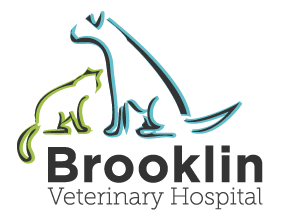Library
-
Cushing's disease, or hyperadrenocorticism, is the overproduction of cortisol hormone by a dog's body. The clinical signs of Cushing's disease are similar, regardless of the underlying cause of the disease. However, it is essential to identify the type of Cushing's disease as the treatment and prognosis differ slightly depending upon the form of the disease.
-
Treatment for Cushing's disease using mitotane involves two phases: initiating phase and maintenance phase. Monitoring your dog's food and water intake is very important. This handout provides detailed treatment instructions for dogs prescribed mitotane. Follow your veterinarian's instructions carefully.
-
A cutaneous histiocytoma is a common benign (harmless) tumor of the skin in dogs, typically younger ones. Their development, appearance, diagnosis, and treatment are explained in this handout.
-
Cutaneous histiocytosis is an uncommon condition in dogs. It is a non-cancerous increase in the number of reactive cells (histiocytes) caused by an immune system dysfunction. It generally manifests as multiple bumps and nodules confined to the dog's skin. The clinical signs, diagnosis, and treatment of this condition are explained in this handout.
-
Lymphoma is a type of cancer that is common in cats. When it occurs in the skin, it is called cutaneous lymphoma, but this form is quite rare. Feline cutaneous lymphoma can present various clinical signs, including itching, alopecia (hair loss), scaly skin, skin redness, loss of skin color, ulcers, nodules, pustules, and plaques.
-
Lymphoma is a type of cancer that is common in dogs. When it occurs in the skin, it is called cutaneous lymphoma, but this form is quite rare. Canine cutaneous lymphoma can present various clinical signs, including itching, alopecia (hair loss), scaly skin, skin redness, loss of skin color, ulcers, nodules, pustules, and plaques.
-
Cutaneous papillomatosis is the development of papillomas (non-cancerous growths, or warts) caused by the papillomavirus and affects many pet birds. Commonly affected species are finches, canaries, cockatiels, budgerigars, and African grey parrots. The clinical signs and treatment for this condition are explained in this handout.
-
Cuterebra is the scientific name of the North American rabbit or rodent botfly. Cats are accidental hosts of Cuterebra larvae (also called warbles). Botfly larvae encyst (burrow in) the skin. A small “breathing hole” is often visible in the skin over the warble, and this hole can become infected when the larvae matures and leaves. Signs and treatment are discussed.
-
Cuterebra is the scientific name of the North American rabbit or rodent botfly. Dogs are accidental hosts of Cuterebra larvae (also called warbles). Botfly larvae encyst (burrow in) the skin. A small “breathing hole” is often visible in the skin over the warble, and this hole can become infected when the larvae matures and leaves. Signs and treatment are discussed.
-
Blue-green algae, also called cyanobacteria, are found in fresh and brackish water of ponds and lakes. These microscopic bacteria can also grow in backyard fountains, garden pots, bird baths, and anywhere water is stagnant. Regardless of where they are found, cyanobacteria can be dangerous.



